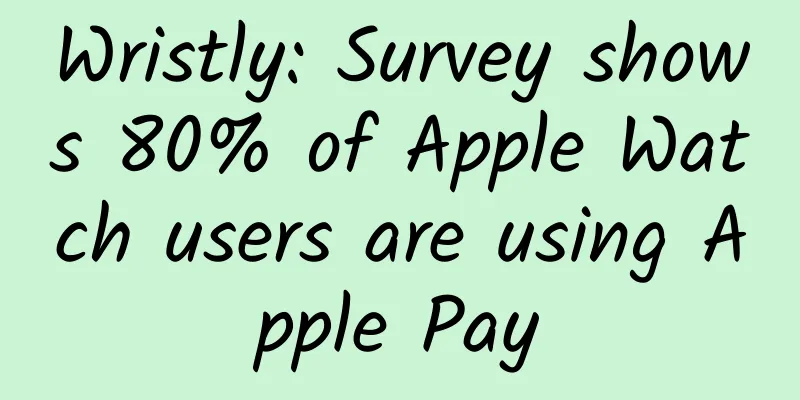Flurry: 88% of iOS 14.5 users worldwide choose to turn off app tracking

|
It’s only been two weeks since Apple introduced its iPhone privacy policy reforms, and many mobile advertisers and app developers are already in chaos. As more and more users upgrade to the latest version, the privacy policy is about to have a greater impact. According to daily tracking data from mobile analytics service company Flurry on May 7, about 96% of American users who updated to iOS 14.5 chose to opt out of ad tracking. Worldwide, the number was slightly lower at 88%. Social apps had the lowest opt-in rates, while utility, weather and gaming apps had the highest rates, with some users' settings choosing to block pop-ups entirely, Ben Holmes, senior vice president of performance and transactions at mobile ad company AdColony, said during a panel on the Clubhouse app on Thursday. While it’s still early days for the policy change, ad prices targeting iPhone users are also falling, perhaps reflecting a smaller trackable audience, though ad prices often fluctuate within a given day or week. Blis, a location-based ad technology company, said the cost (CPMs in the ad industry’s parlance) for 1,000 users on iOS 14.5 was 14% lower than on earlier versions of iOS over the past week. Verve, another location-focused mobile ad platform, said CPMs for all iOS versions fell an average of 3% from the launch of Apple’s app tracking transparency policy through May 6. This is bad news for developers who make money through advertising. Mobile game publisher Tilting Point said earlier this week that CPMs between users with IDFA and those without it dropped by 30%. The biggest complaint advertisers have voiced about the changes is that they can’t analyze which of their campaigns are working, and Apple’s privacy measurement solution, SKAdNetwork, lacks many of the real-time reporting features that traditional mobile marketers are accustomed to. The biggest spenders on app ads are often the app owners themselves, who seek out users who are most likely to download their games, fitness or delivery apps. Marketers in this space excel at targeting ads to those most likely to buy a product or download an app, and measuring exactly which ads drive which actions. Jenny Crook, vice president of mobile products at digital ad agency Jellyfish, likened the impact on these marketers to the retirement of the high-speed Concorde. “Everything is going backwards,” Crook said. “Before, I could target an individual from an ad, see what they installed, and through analytics tracking, know that they saw an ad for a dog, and then I could personalize the app to make it relevant to dogs.” To be sure, many mobile advertising experts say they haven’t seen a noticeable drop in performance for their Apple app ad campaigns since the app tracking permissions transparency policy was introduced. One media buyer even said they’ve seen an improvement in their iOS ad performance over the past two weeks. However, with only 8% of users having updated to iOS 14.5 so far, the true impact of Apple’s privacy updates may not be felt until the next few months, according to mobile measurement service AppsFlyer. Even as of May 4, only 13% of developers had introduced privacy pop-ups, according to AppsFlyer. Apple did not respond to a request for comment. The big question mark on measurement and repositioning Without full access to the IDFA, accurate measurement of ad campaigns becomes a thorny issue that needs to be addressed for advertisers and their suppliers. Apple's SKAdNetwork offers a more limited view, based on a much larger group of users than some advertisers are used to. The groups are intentionally broad-based so that advertisers, vendors and data brokers can't reverse-engineer the data to build profiles of users. Apple hasn't yet made public its "privacy threshold" - the minimum number of users required to create such a group. Crook believes this could hurt small advertisers running smaller campaigns. Another limitation of SKAdNetwork is that Apple only allows advertisers to evaluate 100 campaigns at any given time, experts say. That’s a problem, said Charles Manning, CEO of app measurement company Kochava, because one strategy for marketers is to “create and own unique tracking capabilities and exposure in every micro-targeting category you can think of,” and run different campaigns for each type. “With thousands of unique and different tracking links, you can get micro-measurements for every region, every zip code, every gender, every demographic,” Manning said. “You spend the money and you can separate the wheat from the chaff.” Retargeting, an advertising technique in which advertisers serve ads to people who have already visited their websites, is also proving more difficult to implement after the privacy policy changes. The audiences available to advertisers are becoming smaller, likely because of lower opt-in rates, said Madan Bharadwaj, chief technology officer at measurement agency Measured. As is often the case with major disruptions in the digital advertising industry, the larger platforms are better able to adapt to these changes. Apple's definition of tracking clearly distinguishes between data sharing between companies (or third-party data) and data sharing within a company (or first-party data), even if that company owns multiple apps. Despite vocally opposing changes to app tracking transparency, Facebook recently said it could be a boost to its business. That’s why Apple’s privacy policy change is expected to spark a wave of mergers and acquisitions among companies in the gaming and mobile ad tech sectors , as they seek to build large networks of high-traffic apps and in-house measurement capabilities. This week, mobile gaming giant Zynga said it plans to buy ad company Chartboost for $250 million in cash. Advertisers and developers have no choice but to adapt Apple’s rollout of app tracking transparency isn’t the only step in the digital advertising privacy revolution, with Google announcing plans to remove third-party tracking cookies from its Chrome browser last year. New privacy regulations and enforcement of existing laws, such as Europe’s General Data Protection Regulation, are also bearing fruit around the world. Experts predict that as the industry adjusts to more privacy-focused advertising methods, advertisers will need to focus less on hyper-targeted ads and more on the content of the ads and the context in which they are placed. During a Clubhouse panel on Thursday, Angelina Eng, vice president of measurement and attribution at the Interactive Advertising Bureau’s Technology Lab, predicted a rise in “shoppable ads,” where users can complete a transaction within an app rather than being sent to another website, which Apple would consider “tracking” if advertisers wanted to measure sales. “Platforms including YouTube, TikTok and Twitter have recently developed shoppable ads and tools to keep users within their platforms, so it’s not hard to see how the increase in shoppable ads will be critical, at the very least, to help with user measurement,” Ing said. Some experts predict that if in-app advertising proves ineffective as privacy policies change, advertisers will turn to other platforms. These could include Android, which has not yet taken similar action on mobile ad identifiers, or platforms with sophisticated data and targeting options, such as Facebook and Amazon, as well as traditional media. It’s probably no coincidence that Apple recently launched its own new advertising product in the App Store, designed to help developers get their ads discovered. As the dust settles on Apple's privacy policy update, developers are looking to the next issue that may arise from this issue: enforcement, and how Apple will crack down on companies that try to circumvent its rules. Media reports say that Apple has issued cease-and-desist orders to developers who want to use a workaround called China Advertising ID in China, and that Apple has also rejected other apps that use other advertising technologies that ignore its regulations. “I think Apple has shown they’re serious about this and they’re very, very, very serious about this,” said Dan Beasley, co-founder of Viker, a developer of mobile games including Who Wants to Be a Millionaire and Crossword Puzzle. “I think this is going to be a long game of cat and mouse.” |
Recommend
What are the endocrine changes during pregnancy?
We all know that the human endocrine system is pa...
What are the dangers of cervical erosion degree 3?
For women, their physical health is very importan...
How much does Nayuki's tea red and blue CP tea cost? Is Nayuki's red and blue CP tea delicious? How does it taste?
We all know that Nayuki's Tea is a popular be...
Is it good for women to drink black tea?
In daily life, there are many people who like to ...
Can I eat peppers if I have breast hyperplasia?
Although breast hyperplasia is a relatively commo...
How old is the period?
Years always flow silently, and as time goes by, ...
Does periodontitis only damage teeth? The truth is more complicated than you think
Periodontitis, as a common oral disease that is a...
Is breast pain normal after menstruation?
At present, many female friends have experienced ...
Ovulated last night and had sex tonight
Women have a high chance of getting pregnant duri...
How big is the fetus at 8 weeks
Generally, 4 weeks is regarded as a gestational a...
Why does my private parts smell so bad after sex?
Women's health is very important to a family,...
What to do if there are signs of miscarriage
If you feel that you are showing signs of miscarr...
Medicine for a cold
If people do not pay attention to keeping warm in...
[Diet therapy and health care] What foods are good for women with gynecological inflammation?
Gynecological inflammation is a major problem tha...
Master the 6 tips for breast enhancement and say goodbye to "flat breasts" easily
Step 1: Understand your breast secrets Many Chine...









